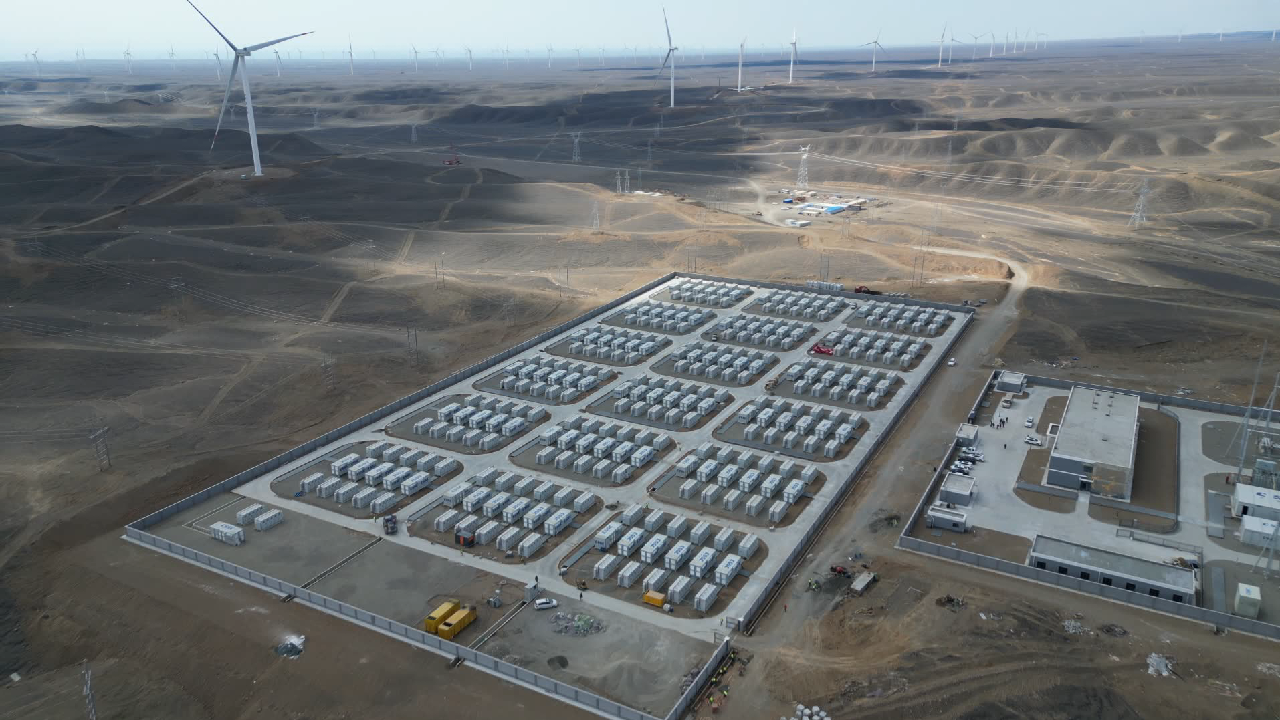In Xinjiang, the Wind Power Revolution in Hami Continues to Surge
In Xinjiang, the wind energy transformation in Hami continues to gain momentum.

One significant initiative is the Shisanjianfang wind-storage integration project in Bailifengqu, an area spanning over one hundred kilometers and noted for its intense wind conditions. Managed by China Shipbuilding Group Wind Power Development Ltd. (CSSC), this facility is the largest of its kind in Xinjiang, featuring a spectacular capacity of 1,000MW in generation and 300MW/1,200MWh in storage. This setup is expected to supply around 3 billion kWh of clean energy to the power grid each year.
Bailifengqu is strategically positioned in China's clean energy plan for harnessing wind power, experiencing high winds on more than 200 days per year, with peaks reaching 50.28 meters per second.
Li Shuai, the deputy director of the wind farm operation office, highlighted to CN journalist Shen Shiwei the environmental benefits of this project, noting, “The clean energy provided to the grid is equivalent to saving around 900,000 tonnes of standard coal and reducing carbon dioxide emissions by about 2.8 million tonnes, nitrogen oxides by over 11,000 tonnes, and other harmful substances such as dust by over 12,900 tonnes.”
The project employs a smart management system that optimizes energy storage, charging during times of low demand and discharging during peak times. "The project will charge during low-demand periods and discharge when grid demand surges," Li said. He also mentioned that the facility's storage can hold enough energy to power 800,000 average-sized households for a day.
Li also elaborated on the critical role of such systems in enhancing grid reliability. The wind-storage setup not only mitigates the variability of wind and solar energy but also helps optimize the production and consumption of new energy, thereby facilitating more stable grid operations.
Xinjiang stands out globally with its high-voltage, long-distance, and high-capacity power transmission capabilities, having witnessed a 103 percent increase in new energy capacity installations in the first six months of the year against the last.
Such developments, alongside ongoing projects like the ±800 kV Hami south-Zhengzhou and the under-construction ±800 kV Hami-Chongqing ultra-high voltage direct current transmission lines, underscore Xinjiang’s pioneering role in fueling China’s green energy transition.
Rohan Mehta for TROIB News
Discover more Science and Technology news updates in TROIB Sci-Tech












